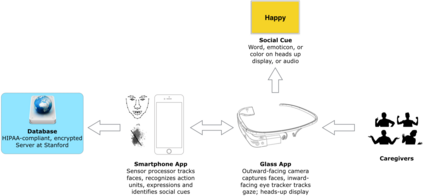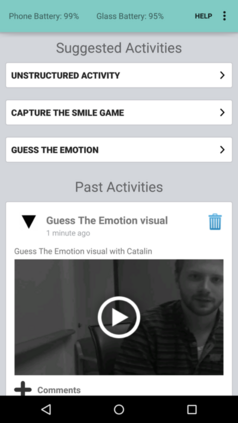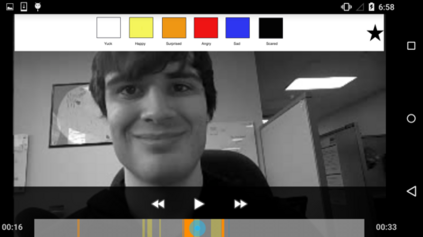We have developed a system for automatic facial expression recognition, which runs on Google Glass and delivers real-time social cues to the wearer. We evaluate the system as a behavioral aid for children with Autism Spectrum Disorder (ASD), who can greatly benefit from real-time non-invasive emotional cues and are more sensitive to sensory input than neurotypically developing children. In addition, we present a mobile application that enables users of the wearable aid to review their videos along with auto-curated emotional information on the video playback bar. This integrates our learning aid into the context of behavioral therapy. Expanding on our previous work describing in-lab trials, this paper presents our system and application-level design decisions in depth as well as the interface learnings gathered during the use of the system by multiple children with ASD in an at-home iterative trial.
翻译:我们开发了一个自动面部表情识别系统,该系统在谷歌玻璃上运行,向磨损者提供实时社会提示。我们将该系统评估为对患有自闭症谱系障碍的儿童的一种行为援助。我们把该系统评估为对患有自闭症谱系障碍的儿童的一种行为援助。他们可以极大地受益于实时非侵入性情感提示,并且比神经典型发育发育的儿童更敏感感官输入。此外,我们展示了一个移动应用程序,让磨损辅助器的用户在视频回放栏上审查他们的视频和自动读取的情感信息。这把我们的学习援助结合到行为疗法的背景中。在以往描述实验室试验的工作的基础上,本文深入介绍了我们的系统和应用层面的设计决定,以及在家迭接试验中与多位患有自闭症的儿童在使用该系统期间收集的界面学习。


















